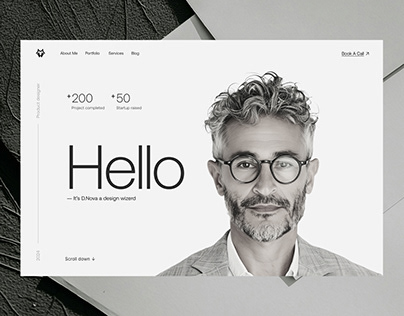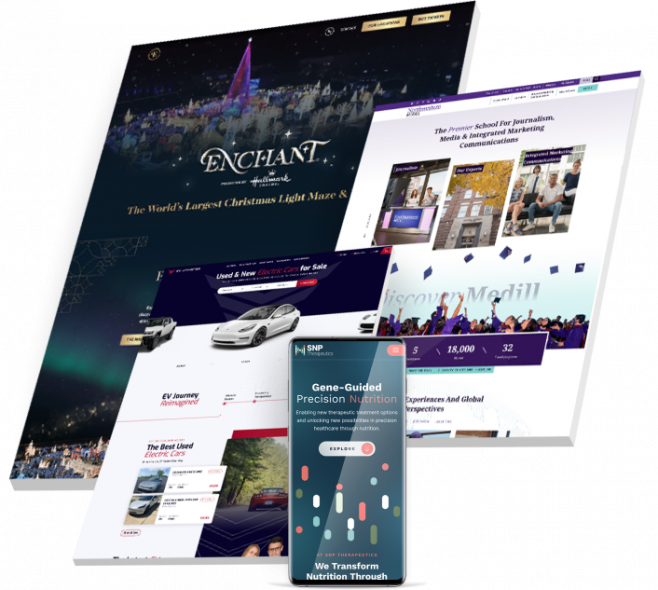How to Improve Your Website Design for Better Conversion Rates
How to Improve Your Website Design for Better Conversion Rates
Blog Article
Modern Internet Site Layout That Catches Attention and Converts
In an increasingly digital landscape, modern-day internet site layout has actually arised as a critical consider catching customer interest and driving conversions. By strategically using aesthetic power structure, responsive formats, and engaging interactive aspects, designers can develop experiences that not only bring in visitors yet additionally facilitate significant interactions. Additionally, effective call-to-action approaches play a crucial role in guiding customers toward preferred end results. As we discover these crucial elements, it comes to be clear that comprehending their interaction can substantially influence a site's efficiency and customer fulfillment. What are the crucial elements that truly make a difference?
Importance of Visual Pecking Order
Aesthetic pecking order is an important element in web site style, as it guides users' attention and enhances their total experience. By strategically arranging web content, designers can route individuals to the most essential information initially, consequently increasing involvement and improving use.
Integrating a sensible circulation in web content arrangement is crucial; for example, putting the most essential info on top of a web page promotes immediate recognition. Moreover, constant usage of typography, such as varying font sizes and designs, helps establish a clear content structure. This company not only aids in navigating yet additionally builds depend on, as customers feel much more comfy when they can easily find what they are seeking.
Ultimately, a well-executed aesthetic pecking order not only enhances visual allure but likewise considerably influences user habits. By focusing on vital elements and guaranteeing a smooth experience, designers can successfully transform visitors right into clients, enhancing the importance of this fundamental design principle in contemporary site advancement.
Responsive Style for All Instruments
Creating a smooth experience throughout various gadgets is crucial in today's digital landscape, where users access internet sites from smartphones, tablets, and desktop computers alike. Responsive layout is an important approach that guarantees websites adjust fluidly to different display resolutions, dimensions, and alignments. By using versatile grids, photos, and CSS media inquiries, designers can develop layouts that preserve aesthetic stability and capability, no matter the tool being made use of.
The value of receptive style extends past appearances; it directly affects user engagement and conversion rates. An internet site that functions well on all devices urges longer visits and reduces bounce rates, as customers are most likely to engage with web content that is very easy to navigate. Search engines, especially Google, focus on mobile-friendly websites in their rankings, making receptive design a vital part of search engine optimization (SEO)
Incorporating responsive layout not only enhances individual experience however also simplifies the advancement process. By creating a single site that functions throughout devices, services can save time and sources contrasted to creating different mobile and desktop versions. Inevitably, responsive design is an essential method for contemporary web site layout, ensuring ease of access and fulfillment for all users, no matter of their tool.
Involving Interactive Aspects
While a responsive layout prepares for a practical site, including engaging interactive aspects is vital for recording individual focus and promoting much deeper links. Website Design. Interactive aspects, such as animations, tests, and clickable infographics, produce a much more vibrant individual experience, motivating site visitors to invest even more time on the site
Incorporating interactive attributes can also assist customers via complicated information, making it easier to digest material. Interactive sliders can illustrate item variations, while embedded videos can offer presentations or reviews that reverberate even more than static photos or message. In addition, gamification strategies, like rewards for engaging or completing tasks with material, can boost customer motivation and retention.
Effective usage of interactive components not just enriches the individual experience yet can likewise result in higher conversion prices. By making communications useful and delightful, services can grow a feeling of commitment important source and trust fund with their target market. However, it is vital to balance interactivity with performance; excessively complicated features might prevent site speed, negatively influencing individual satisfaction. Inevitably, incorporating properly designed interactive components can dramatically boost a site's efficiency, driving involvement and conversions in today's affordable electronic landscape.
Streamlined Navigating Practices
Reliable navigating is a cornerstone of any kind of successful site, as it directly affects individual experience and web content availability. Streamlined navigation techniques guarantee that users can easily situate details, improving their communication with the site. A well-structured navigating menu ought to be basic and intuitive, commonly including a minimal number of key groups to stay clear of frustrating visitors.
To accomplish structured navigating, developers should prioritize an ordered structure that realistically arranges material. Executing breadcrumb tracks can provide customers with context regarding their existing place within the website, enabling seamless backtracking. Additionally, making use of drop-down food selections can efficiently conserve space while still supplying accessibility to subcategories.
Responsive layout is crucial, as navigation needs to be practical across all devices (Website Design). Mobile customers, specifically, gain from touch-friendly food selections and retractable areas that preserve usability without endangering aesthetics

Efficient Call-to-Action Methods
A well-crafted call-to-action (CTA) is crucial for assisting customers towards preferred outcomes on a web site, as it motivates them to involve with material or buy. To maximize their effectiveness, CTAs ought to be clear, engaging, and strategically positioned throughout the site.
First, make use of action-oriented language that communicates seriousness or worth, such as "Obtain Started," "Sign up with Currently," or "Insurance claim Your Price cut." This language not just encourages individuals yet additionally sets more tips here clear assumptions regarding the following steps.
2nd, consider layout elements; CTAs should stand apart visually via contrasting colors, sufficient whitespace, and prominent positioning. A switch that is very easy to see and click increases the probability of user interaction.
Furthermore, customizing CTAs based upon user behavior or demographics can dramatically improve involvement. Tailored messages resonate more with users, driving higher conversion rates.

Conclusion
In verdict, modern site layout stresses the integration of aesthetic hierarchy, responsive designs, involving interactive components, streamlined navigating, and reliable call-to-action approaches. These components collectively enhance customer experience, guaranteeing that site visitors continue to be involved and encouraged to explore material better. By focusing on these layout concepts, companies can significantly enhance individual retention and conversion rates, eventually causing greater success in the electronic landscape. The constant advancement of internet layout emphasizes its critical function in efficient on the internet interaction and marketing.
In a progressively digital landscape, modern internet site layout has emerged as a pivotal aspect in catching user attention and driving conversions.Visual hierarchy is an essential aspect in internet site style, as it overviews individuals' attention and boosts their general experience.The significance of responsive style extends past aesthetics; it straight influences individual interaction and conversion rates.Including receptive design not just boosts individual experience but additionally enhances the development process. Ultimately, receptive design is a basic technique for modern-day internet site style, ensuring access and satisfaction why not try these out for all customers, regardless of their device.
Report this page